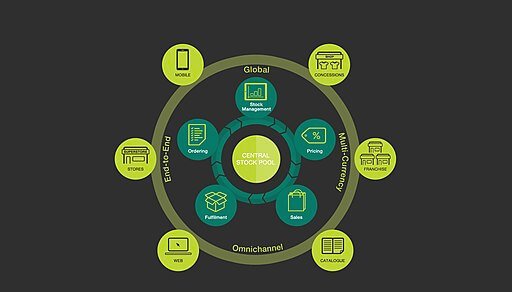These 3 Reasons Explain Why Omnichannel Sucks
Here’s why your omni-efforts are failing your business.
Is the omni-experience a dying fad? Or will it eventually deliver on its promise of providing an all-in-one and flawless customer experience? The answer remains debatable.
Despite the popularity of omnichannel, a 2018 survey by BRP Consulting showed that a measly 7% of retailers offer a comprehensive customer experience. That is, only a handful of merchants have the capacity to let their customers “start the sale anywhere, finish the sale anywhere.” This does not mean that omnichannel is hopeless. On the contrary – this relatively new technology has been gaining much traction nowadays.
As of now, though, retailers attempting to implement omnichannel strategy are offering half-hearted solutions to their customers – and therein lies the rub. Omnichannel is an approach that demands absolute commitment. Otherwise, it’s going to be a complete waste of time. Worse – it can even cost you customers.
What is omnichannel?
The omnichannel strategy zeroes in on the needs of the customers as opposed to focusing heavily on the sales target. The goal of retailers implementing this approach is to ensure that their clients get an all-in-one and integrated customer experience regardless of the gadgets or channels – either online or offline – they choose to utilize.

Customers should be able to check out the features, prices, available rebates, and product or service reviews. They should also be able to visit the store to verify the information they found online, place their orders, and request for delivery. All of this should be done with marginal friction. This means that a successful omnichannel strategy provides a flawless purchasing journey to its customers.
Omnichannel delivers omni-fails
Omnichannel presents massive growth opportunities to businesses in almost all industries. Successful implementation of this approach can give brick-and-mortar stores the stability they desperately need in the age of ecommerce. But like all promising and profitable strategies, executing an efficient and effective omnichannel approach will cost retailers a pretty penny.
While it’s understandable to quibble a bit about spending a fortune on this strategy, modern entrepreneurs are seriously considering omnichannel as a promising investment. In fact, BRP Consulting’s survey revealed that 50% of retailers aim to implement this approach in the next three years.
Like all systems though, omnichannel is far from perfect. Up until today, there are still a number of concerns that need to be addressed before this strategy reaches its peak. So before you jump on the bandwagon, take a look at some of the things people hate about omnichannel – or, as we call it, omni-fails – to help you make up your mind.
Omni-fail 1: Backend and frontend systems have different objectives
Offering an omnichannel service requires a lot of multitasking. The frantic activities on both backend and frontend systems usually result in negative customer service experience. Before this strategy entered the world of retail, customer experience had been pretty straightforward. All retailers had to do was deliver the orders, and that was the end of the purchasing journey. Now, the simple task of delivering the correct item to the right customer at the precise date and time demands scheduling and designing complex, numerous, and sometimes even international coordination and processes – all in real time.

For example, many customers complain that the items in physical stores do not match the ones they order online. This gives the impression that the brick-and-mortar stores have different fulfillment centers, making customers suspicious of the authenticity of the products displayed on the brand’s website. Ultimately, the brand suffers because the production team neglected to produce items of the same quality for all the distribution channels.
It’s really simple. If your backend and frontend systems do not talk to each other, then you’re in big trouble. A study by Forrester Consulting revealed that incompatible approaches and contradicting priorities still pose critical problems for retailers today. An omnichannel strategy comes with the expectation that all of your employees – regardless of their roles and locations – should be on the same page. All of them should be focused on the same goal, which is to provide a smooth and satisfactory customer experience both online and offline.
Omni-fail 2: Fragmented communication lines
Disjointed communication lines can lead to angry and frustrated customers. One of the most common additions brought about by e-commerce is customer service support. This includes phone, email, and chat support that aims to provide information or resolve users’ issues. However, some businesses fail to actually staff these platforms, which leads to disgruntled customers who opt out of buying the items simply because they couldn’t find anyone to assist them.
Since websites are “open” 24/7, it follows that retailers must provide support during these hours as well. Every step of the sales funnel is crucial, so it’s important for customers to feel that their needs are being handled. Otherwise, they might not only leave the site frustrated but also decide to skip the brand the next time they want to purchase something online or even offline. Remember – one bad experience has the ability to ruin years of good service.
Omni-fail 3: Horrendous omni-returns experience
A widespread issue among omni-sellers is the way they handle omni-returns. That is, they allow customers to buy the products from anywhere, but some stores fail to come up with reverse logistics concerns. For customers, this means they are not guaranteed that the nearest and most convenient physical store will accept the product they want to return.

Some stores reason that they no longer carry certain items. As a result, the customer is forced to search for a store that accepts or still carries the particular product. Clearly, this is an infuriating customer experience.
This omni-fail makes these businesses look like aggressive money grabbers, masking their greed from their unsuspecting customers by making promises they have no intention of keeping. From caring and smooth-talking, these same businesses instantly turn stone cold and apathetic the moment their customers express dissatisfaction with the products.
Businesses should pay more attention to these issues, especially since the BRP Consulting study showed that 68% of customers prefer stores that provide an automated returns process. According to the survey, these businesses have a more customer-friendly image because of their return policy.
Final thoughts
Omnichannel is a term loaded with countless opportunities that promise success stories of varying degrees. Industry experts use it to market expansion prospects. Software professionals look at it as a means to reach more customers and boost sales. Retailers view it as a strategy to increase the number of ways they can sell their products, potentially reaching out to their market both online and in their brick-and-mortar stores. As for the consumers, they expect omnichannel to deliver a complete and convenient customer service experience.
While all these advantages look pretty good on paper, omnichannel has yet to fulfill its promises, especially to customers. After all, wanting and actually getting are two very different things.
Sources:
- https://www.inc.com/peter-roesler/new-survey-reveals-what-consumers-want-from-omni-channel-shopping-experience.html
- http://www.prweb.com/releases/2018/05/prweb15505860.htm
- https://www.forbes.com/sites/forbescommunicationscouncil/2018/01/11/the-truth-about-omnichannel/
- https://go.forrester.com/blogs/omnichannel-its-not-what-your-ad-tech-provider-tells-you-it-is/
- https://centricdigital.com/blog/customer-experience/challenges-opportunities-omnichannel-retail-marketing/
- https://www.fm-magazine.com/news/2014/mar/20149797.html?TestCookiesEnabled=redirect
